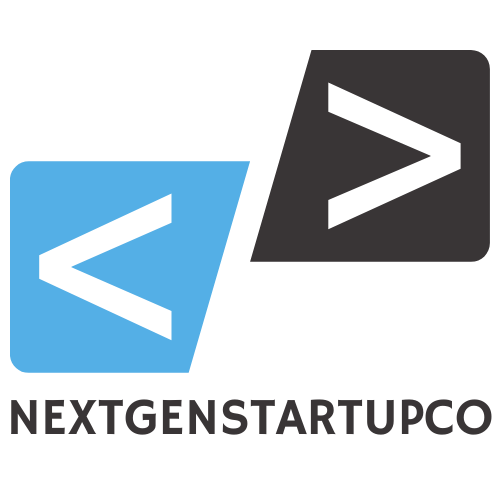In today’s fast-paced digital world, managing Software as a Service (SaaS) is like herding cats—if those cats were also juggling flaming torches. With countless applications popping up and businesses relying on them, effective SaaS management is no longer a luxury; it’s a necessity. Companies need to keep track of subscriptions, usage, and security, all while trying to avoid the dreaded “SaaS sprawl.”
Imagine trying to find a needle in a haystack, but that needle is a forgotten subscription costing you money every month. With the right SaaS management strategies, organizations can streamline their processes, save money, and even boost productivity. It’s time to turn that chaotic cat circus into a well-orchestrated symphony. Dive into the world of SaaS management and discover how to tame the chaos while reaping the rewards.
Table of Contents
ToggleOverview of SaaS Management
SaaS management involves overseeing multiple software applications delivered via the cloud. Organizations must manage subscriptions effectively to prevent overspending and maximize the value of these services. Tracking usage metrics helps to identify which applications deliver the most benefit. Security remains a critical factor in SaaS management, as sensitive data often resides within these platforms.
By maintaining visibility across all SaaS applications, companies can avoid issues like “SaaS sprawl.” Organizations often face challenges related to compliance and data governance. Implementing a centralized management solution can streamline operations.
Periodic audits of SaaS applications ensure that every subscribed service meets the company’s requirements. Failure to manage these services can lead to wasted resources and security vulnerabilities. Moreover, a comprehensive software inventory aids in evaluating performance and cost-effectiveness.
It’s essential to prioritize user training when integrating new SaaS tools into the system. Employees with proper training utilize tools effectively, enhancing overall productivity. Organizations often rely on metrics to assess the success of SaaS tools in meeting business objectives. Regular reviews can help determine if applications continue to fit evolving needs.
Deployment strategies also play a vital role in achieving success. Proactive adoption of SaaS management best practices leads to improved decision-making. Choosing an appropriate management platform simplifies the oversight process, offering insights into usage patterns. Investing in effective SaaS management transforms chaotic practices into streamlined operations.
Importance of SaaS Management

SaaS management plays a crucial role in maximizing the benefits of cloud-based applications while mitigating potential risks. Effective strategies drive efficiency across various business dimensions.
Cost Efficiency
Cost efficiency represents a key benefit of efficient SaaS management. By tracking subscriptions diligently, organizations prevent overspending on unused or redundant services. Identifying duplicate tools enables teams to consolidate resources. Leveraging subscription audits often uncovers savings opportunities, leading to budget optimizations. Additionally, controlling license counts ensures resources align with actual user needs. Organizations that prioritize cost efficiency see significant financial returns by reducing excess expenditure. Attention to SaaS spending results in a healthier bottom line and fosters strategic investments into necessary tools.
Performance Optimization
Performance optimization significantly enhances the effectiveness of SaaS applications. Regularly monitoring usage patterns helps organizations determine which tools deliver the most value. User feedback plays a vital role in understanding performance bottlenecks and overall satisfaction. Continued evaluation allows companies to align their SaaS stack with evolving business goals. Proactive adjustments and improvements boost productivity across teams. Aligning tool effectiveness with organizational objectives fosters a culture of continuous improvement. By prioritizing performance optimization, organizations harness the full potential of their SaaS investments.
Best Practices for SaaS Management
Effective SaaS management maximizes value and minimizes waste through careful oversight of applications. By following best practices, organizations can streamline their operations and enhance productivity.
Inventory Management
Managing an accurate inventory of SaaS applications is essential. Organizations should maintain a comprehensive list of all subscribed services, helping to prevent overspending and software redundancy. Regular updates to the inventory ensure that organizations discard outdated or unused tools, leading to cost savings. Tracking license counts also aids in aligning resources with actual user needs, minimizing unnecessary expenses. Automation tools can simplify this process, allowing real-time visibility into SaaS subscriptions and usage patterns. When maintained well, an inventory acts as a key resource for informed decision-making, ensuring alignment with business goals.
User Access Control
Implementing robust user access controls promotes security and compliance within SaaS environments. Defining user roles and permissions is crucial for limiting access to sensitive data and critical applications. Regularly reviewing user access can identify and remove unnecessary permissions, protecting organizations from potential data breaches. Multi-factor authentication adds an extra layer of security, safeguarding against unauthorized access. Training employees on security best practices further enhances awareness and reduces risks associated with data sensitivity. Overall, ensuring strict user access control helps in protecting an organization’s digital resources while fostering trust in their SaaS management strategy.
SaaS Management Tools
SaaS management tools streamline oversight of cloud-based applications, enhancing efficiency and security. Organizations leverage these tools to track subscriptions, manage usage, and maintain compliance.
Comparison of Popular Tools
Various tools serve distinct purposes in SaaS management. For instance, G2 reviews reveal that Blissfully excels in providing comprehensive spending insights, while Torii focuses on automating admin tasks. Another option, BetterCloud, highlights its strength in user lifecycle management, offering robust security features. Each tool boasts unique advantages, making it essential for organizations to assess their specific needs before selecting one.
Features to Look For
Selecting the right SaaS management tool hinges on key features. Look for robust integration capabilities to unify multiple applications seamlessly. User-friendly dashboards enhance usability and provide clear visibility into subscription statuses. Automated reporting saves time, enabling teams to make informed decisions quickly. Security functionalities, such as access controls and activity monitoring, are vital in protecting sensitive data. Prioritizing these features ensures organizations maximize the value of their SaaS investments while mitigating risk.
Challenges in SaaS Management
SaaS management presents several challenges that organizations must address to fully benefit from their cloud-based applications.
Security Risks
Security risks significantly impact SaaS management. Sensitive data often resides within these applications, making them attractive targets for cyber threats. Companies face risks from unauthorized access, data breaches, and compliance violations. It’s crucial to implement stringent user access controls, define roles, and regularly review permissions. Multi-factor authentication further enhances security, safeguarding data against potential vulnerabilities. Training employees on security protocols keeps them informed and vigilant. Regular audits of security practices help identify areas for improvement, ensuring that data remains secure. Organizations prioritizing proactive measures can minimize exposure to security threats.
Integration Issues
Integration issues often arise in SaaS management. Many organizations utilize multiple applications, leading to fragmented data and inconsistent workflows. Inconsistent integration complicates data synchronization across tools, creating inefficiencies. High-quality SaaS management tools offer robust integration capabilities, allowing seamless communication between applications. Organizations benefit when they prioritize tools that facilitate connectivity and automate processes. Consolidating applications can streamline operations, reducing the risk of data silos. Assessing integration needs before implementing solutions enhances organization-wide collaboration. Addressing these integration challenges positions companies for improved efficiency and better decision-making.
Effective SaaS management is essential for organizations navigating today’s digital landscape. By implementing best practices and utilizing the right tools, they can gain control over their applications, optimize performance, and enhance security.
Prioritizing user training and maintaining an accurate inventory helps mitigate risks and ensures compliance. Regular audits and monitoring of usage patterns allow for informed decision-making, ultimately leading to cost savings and improved operational efficiency.
Investing in a robust SaaS management strategy not only streamlines processes but also positions organizations to leverage their cloud-based tools fully. The right approach transforms chaos into clarity, driving productivity and supporting long-term business goals.



